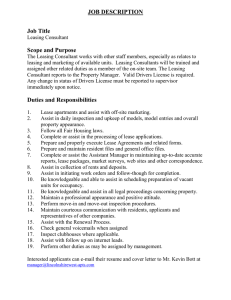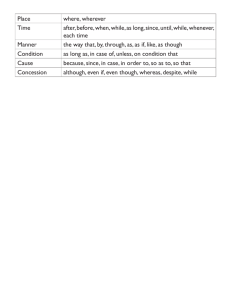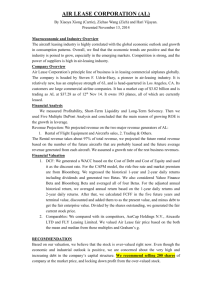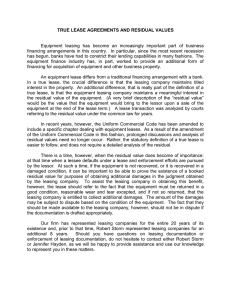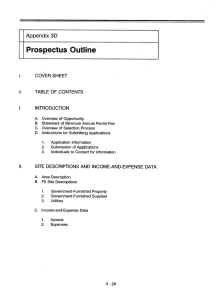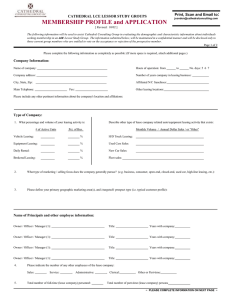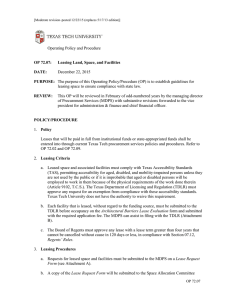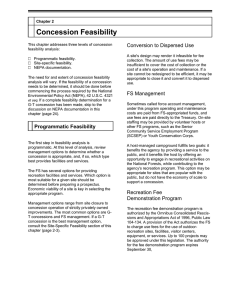Chapter 4: Facility Planning
advertisement
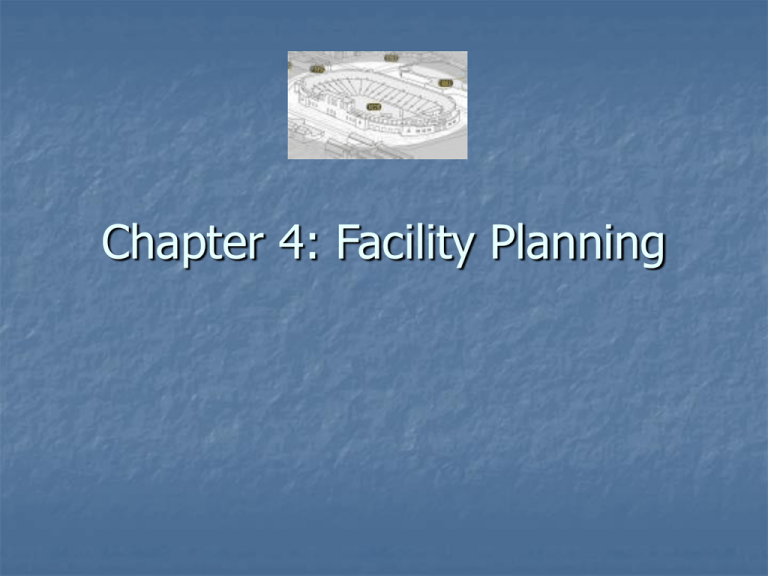
Chapter 4: Facility Planning Contents Introduction Planning for Existing Facilities Planning for Future Facilities Summary Introduction Planning is a fundamental skill required by all managers Planning involves a significant amount of time and effort Planning forms a base for short-term needs and long-term vision Fundamentals of Planning Planning – a process of determining the appropriate allocation of precious resources to ensure facility success. Through A group of people (a gang in a room – AGIR) Authoritarian technique (one man on a mountain – OMOM) AGIR (A gang in a room) Facility users (students, athletes, faculty) Community members Lawyers, architects, engineers Who would you include for a professional stadium and then a high school gym? OMOM (One man on a mountain) One person decides everything What are the strengths and weaknesses of this method? Types of Facility Planning Planning for existing facilities What events and when Planning for future facilities If and when to build Planning for Existing Facilities A Manager may be involved in the facility planning process from the beginning phase to the occupancy permit. Manager’s Jobs Coordinate maintenance Monitor concession purchases and sales Deal with various issues relating to the facility and its ancillary areas Fiscal planning Concession area Parking area Main Responsibilities Money, personnel, and scheduling Space management Money, Personnel, and Scheduling Money (construction, business) Personnel (operational hours, events, where, what skills) Scheduling (games, events, number of participants. Documentation. Space Management Growth needs (proper allocation of time and space for bookings) Maximizing revenue Move management (to free up space) Swing space (any space available during renovations, alterations, or realignment) Growth space Planning for Future Facilities Where, what, how to build To meet greatest current needs To anticipate future needs To cause the least amount of financial harm or inconvenience Planning Process The first step is to analyze existing internal and external constituents Steps: Conduct a feasibility study Develop a potential budget Organize various planning committees Set realistic goals and objectives Study political and financial marketplace Bring in the right people before the project starts Community Support Public funds require community involvement to convince the public & opponents about the need of the facility. Facility planners need to respect opponents who raise valid concerns. Creating a Planning Committee A typical committee for a college recreation center might include: Administration Athletic department Faculty Recreation staff Students Off-campus constituents Needs Assessment Internal demand (future facility users, industry-driven needs) Market assessment needs (facility standards, survey results, local competition) Demographics (age, nationality, gender, religion, race) Types of Facilities Stadiums Arenas Gyms Community Sport Centers Sportsplexes Domes Other facilities: Golf courses, water parks… Feasibility Studies Two phases Preliminary phase: preliminary Study Size and Comprehensiveness Cost and Time Required Expanded Phase Economic Impact Site Planning Site selection and design Analysis of legal and government concerns Others Plans Developing and Selling the Future Plan Developing a Business Plan for a Facility Financing the Facility To determine whether to purchase, build, or lease. Analysis of the cost of capital, lease terms, purchase price, the cost and political issues associated with borrowing money/leasing. Summary The Planning process entails…. examining what type of facility will meet a given need/objective and working out the justification for building or leasing. determining what facility to build or lease and to justify the need for the facility

